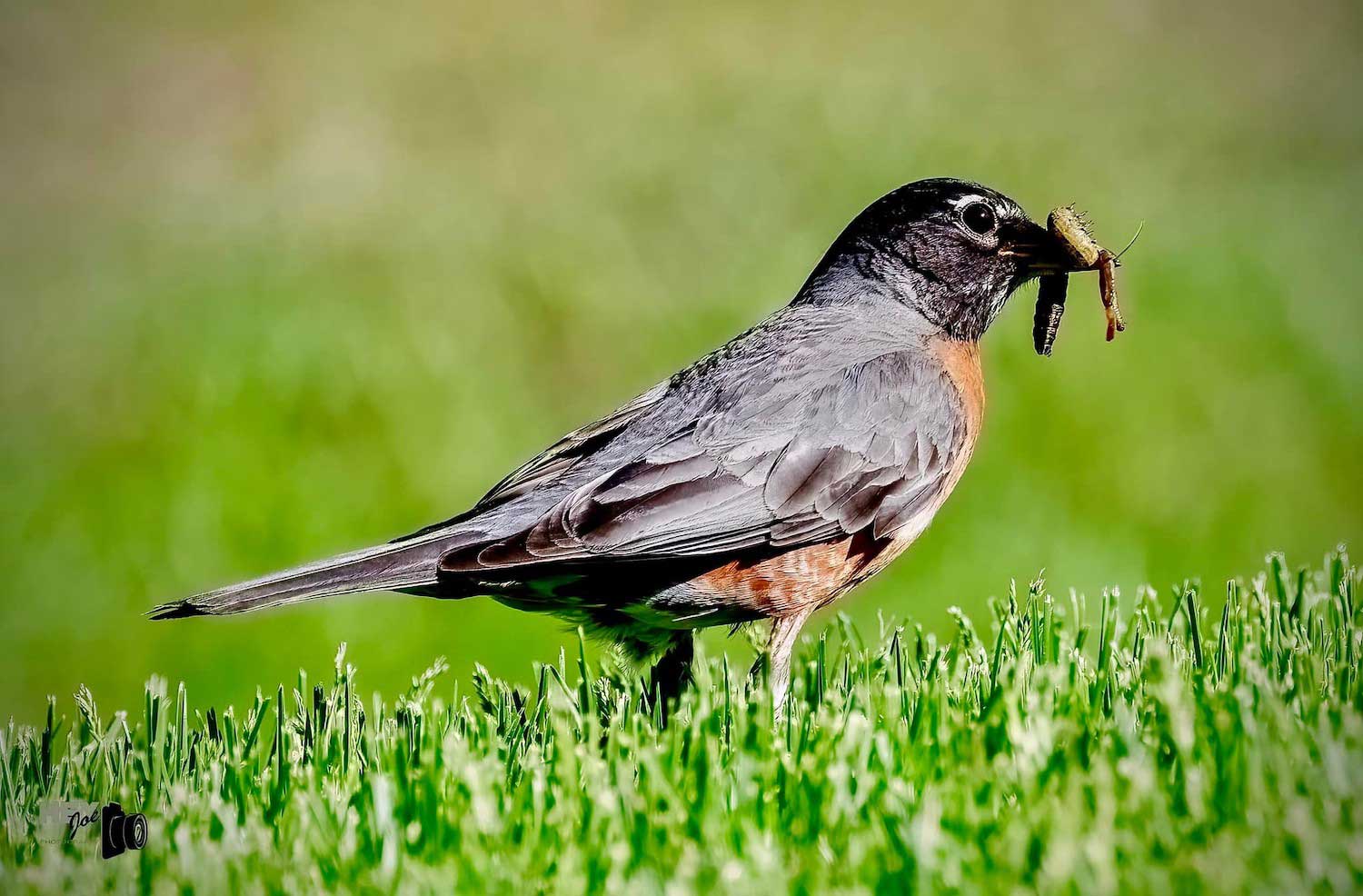Nature curiosity: How do robins find worms?

The sight of a robin in your grass poking around for worms is a welcome one each spring, but have you ever wondered how they are able to locate their favorite food from aboveground?
It's common to see a robin cocking its head, presumably to hone in on a worm using its sense of sound. And while finding worms is a sensory experience for robins, they might not be using the senses you would expect. Because the robins are above the ground and the worms are below it, you might theorize that they rely on a keen sense of smell to sniff them out, or maybe a good sense of hearing to listen carefully for the sounds of them moving around in the soil. Neither is really the case, however.
We know a lot about how robins find worms thanks to a series of experiments designed by ornithologist Frank Heppner, who wondered about it himself, according to Journey North. Heppner was able to determine that smell is not a factor in how birds find and choose foods. And by using highly sensitive recording devices, he determined the robins ignore the sounds worms make as they burrow down below. Similarly, they don't feel the worms moving around beneath them because they sense their vibrations.
Instead, it's primarily the most unlikely of senses — sight — that robins rely on to find a meal. How do they see the worms beneath ground level? They dig small holes into the earth and then take a look to see if there are any worms in view.
Heppner suspected robins relied on their sense of sight to find worms, so he designed an experiment to determine whether his hypothesis was correct. As part of the experiment, he drilled holes in the ground just like the ones the robins dig themselves. The robins would show interest in the holes only if a worm was visible inside, Journey North reports. He further tested that it was their vision that cued them into the worms presence by using fake worms, living worms and worms coated in a foul-smelling substance. No matter the kind of worm inside, as long as the birds could see the worms, they were interested in the hole, confirming his suspicion that robins find their favorite food using their sense of sight.
So if robins find worms by seeing them, why the head tilting? That's related to their vision too. Like many songbirds, their eyes are on the sides of their heads. When they tilt their heads, they are turning to get a good look with one eye and then turning their head to get a good look with the other, ornithologist Kevin McGowan told Birds & Blooms.
Robins aren't the only birds that eat worms, although their penchant for the wrigglers is probably the keenest, with robins eating as much as 14 feet of earthworms in a single day, according to Bird Feeder Hub. Other worm-eating birds include killdeers, plovers, wrens and woodcocks.
Woodcocks are known for a peculiar dancing strut, and it's long been speculated that they walk in this very distinct manner because it causes the worms underfoot to move around, making them easier to find and eat. However, studies have shown that woodcocks also strut their stuff on frozen ground, when the worms are too far below ground to dig up for a meal, according to BirdNote. Another possible explanation for the unique walk is that they are signaling potential predators that they are aware of their presence, although researchers so far have not been able to determine what the purpose of the walk is.
